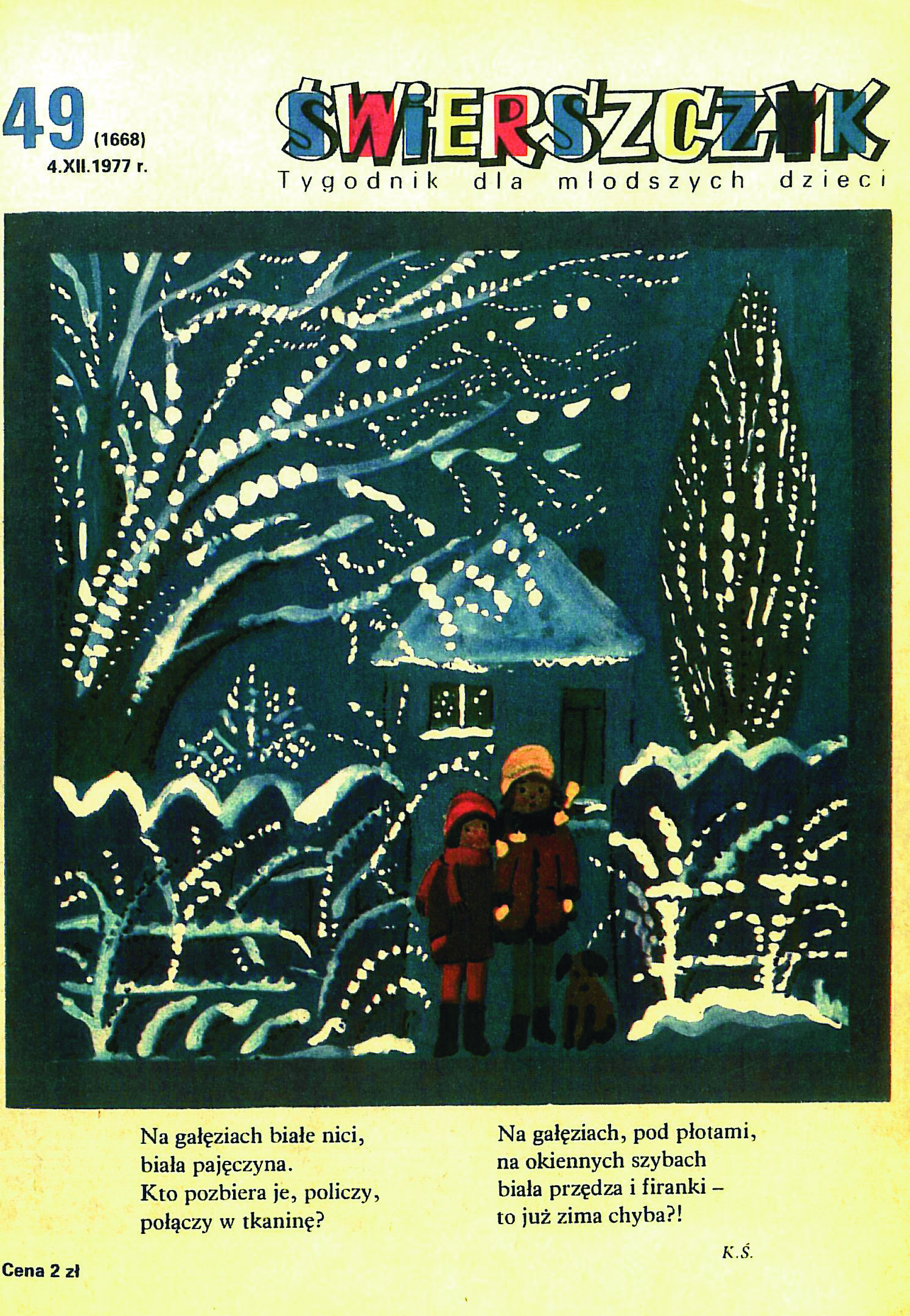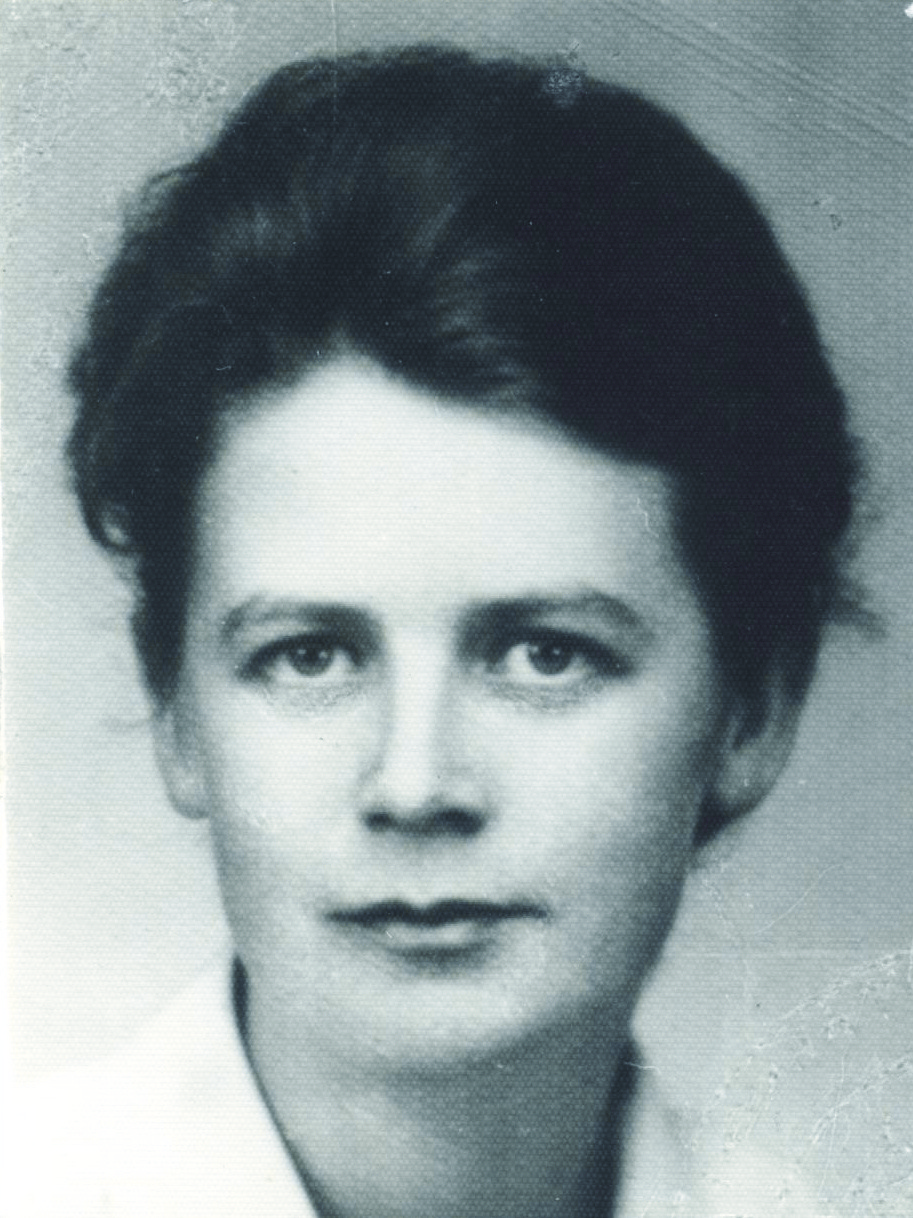Title of the work
Country of the First Edition
Country/countries of popularity
Original Language
First Edition Date
First Edition Details
Jadwiga Jałowiec, "Pegaz,” Świerszczyk 49 (1977): 776.
ISBN
Genre
Poetry
Target Audience
Children (the magazine is aimed at 5–9 years old)
Cover

Courtesy of the publisher.
Author of the Entry:
Summary: Małgorzata Glinicka, Univeristy of Warsaw, muktaa.phala@gmail.com
Analysis: Marta Pszczolińska, University of Warsaw, m.pszczolinska@al.uw.edu.pl
Peer-reviewer of the Entry:
Katarzyna Marciniak, University of Warsaw, kamar@al.uw.edu.pl
Elżbieta Olechowska, University of Warsaw, elzbieta.olechowska@gmail.com

Photograph courtesy of Wiktor Bartczak, the Author’s Son.
Jadwiga Jałowiec-Bartczak
, 1941 - 2003
(Author)
A poet, teacher, social worker, and highly innovative educator. Born on June 25, 1941, in Złotopole near Lipno (Central Poland, northwest from Warsaw). After graduating from the Pedagogical Seminary in Wymyślin, she worked as a teacher in village schools. She completed her education, gained a higher degree and spent the rest of her professional life working in Primary School No. 3 in Lipno. Simultaneously with her educational activity, she worked at the Institute of School Curricula at the Ministry of National Education; in 1985–1991, she was a member of the Editorial Board of the weekly for children, Świerszczyk [The Little Cricket]. She was highly accomplished and diligent in a range of different occupations such as writing, illustrating, creating collages, weaving, and embroidering. Author of several collections of poems for children and adults: Najpiękniej jest po deszczu [It is the Most Beautiful After the Rain], 1981; Nasze drzewa [Our Trees], 1982; W środku świata [In the Middle of the World], 1988; Zadudnię kroplą w srebrnej rynnie [I’ll Make a Drop Rumble in a Silver Gutter], 1991; Siądź przy leśnej drodze [Sit Down at a Woody Road], 1998; novel Polne koniki [Grasshoppers], 1978; lexicon for the youngest children, Mój pierwszy leksykon [My First Lexicon], 2000, and (with Maria Lorek) a four-part textbook Słońce na stole [The Sun on the Table], 2000. Her poetry, published in various magazines and characterized by empathy, gentleness and consideration, was translated into Bulgarian, English, Macedonian, and Serbo-Croatian.
She acted as chair of the Literary Group of Lipno (1989–2003), was a member of the Teacher’s Literary Club in Włocławek and of the Dobrzyń Region Association of Enthusiasts. She was awarded the Ministry of National Education’s Medal, the Town of Lipno Merit Award, and other decorations. She died May 3, 2003 after a long illness and was buried in Nowa Wieś near Olsztyn, in north-eastern Poland.
Source:
Bio based on the material kindly provided by Kazimierz Skarżyński, the Headmaster of Jadwiga Jałowiec Private Gymnasium No. 1. in Lipno.
Bio prepared by Małgorzata Glinicka, University of Warsaw, muktaa.phala@gmail.com
Summary
Based on: Katarzyna Marciniak, Elżbieta Olechowska, Joanna Kłos, Michał Kucharski (eds.), Polish Literature for Children & Young Adults Inspired by Classical Antiquity: A Catalogue, Faculty of “Artes Liberales”, Warsaw: University of Warsaw, 2013, 444 pp.
The poem is a dialogue between a child and an adult, asking how the child sees their future. It turns out that the child has a very specific idea of what should happen, dreams of becoming a brave horse rider able to cover – quickly and gracefully – great distances, riding with the wind and touching the stars. The poem’s rhythm resembles a horse’s canter or the gentle rustling of the wind.
Analysis
The poem shows a child answering the question often asked by aunts, uncles, nursery or kindergarten teachers: “Who do you want to be when you grow up?” The child’s imagination ventures more into mythical dreams rather than concrete occupations, like an engineer, lawyer, or musician. The child, the lyrical subject of the poem, dreams of being an unusual rider – a kind of fearless magical horse master, harnessing winds and riding a stallion into the sky. Aware that an adult could say that horses do not fly, the child pre-empts such criticism by asking: “Have you ever heard of Pegasus? My horse is called Pegasus.” Note that this clever answer is from the child’s knowledge of mythology, perhaps from listening to bedtime stories. Flying to the stars on a horse’s back relates to the myth of Pegasus and Bellerophon, which must have fascinated the child’s imagination.
Although Pegasus appears only at the end of the poem and the myths of his origin or service to Bellerophon in the slaying of Chimaera are not told in any detail, riding a winged horse still remains the key element of this imaginary, fantastic future. The child pictures star travels practically, suggesting how it could be achieved. Not in a space rocket, which would be logical in the period of early space travel (six months later, Mirosław Hermaszewski, the first Polish astronaut, began his journey to the stars). Instead, the author selects Pegasus as the conveyor of the winged dreams, a mythical creature, a warm living being, obedient and tame. The child believes in the existence of Pegasus and trusts its pure animal heart.
The illustration by Hanna Zakrzewska contributes to the image of a fantastic bedtime story. Against the background of a night sky, the child travels on a blue Pegasus. The rider and mythical stallion achieve the dream of reaching the stars on horseback in a perfect symbiosis across infinity.
Further Reading
Chojnicki, Tadeusz, Jadwiga Jałowiec-Bartczak (1941–2003). Nauczycielka, poetka, regionalistka i społecznik, http://www.tmzdlipno.cba.pl/pliki/ludzie. htm (accessed: March 15, 2013).
Ciesielska, Bożena, Jadwiga Jałowiec. Miłośniczka ziemi dobrzyńskiej, http:// www.mapakultury.pl/art,pl,mapa-kultury,101856.html, 13.10.2011 (accessed: March 15, 2013).
Magazyn dla dzieci „Świerszczyk” – najstarsze czasopismo dla dzieci w Europie! A wszystko zaczęło się tak… at the Magazyn dla dzieci Świerszczyk website (accessed: January 21, 2022).
Piecuch, Ewelina, “W gąszczu dziecięcych potrzeb – znaczenie edukacyjne tekstów kultury popularnej na podstawie czasopisma dla dzieci pod tytułem “Świerszczyk”, Kultura – Społeczeństwo – Edukacja 2/16 (2019): 117–133.
Addenda
Illustrations: Halina Zakrzewska.


